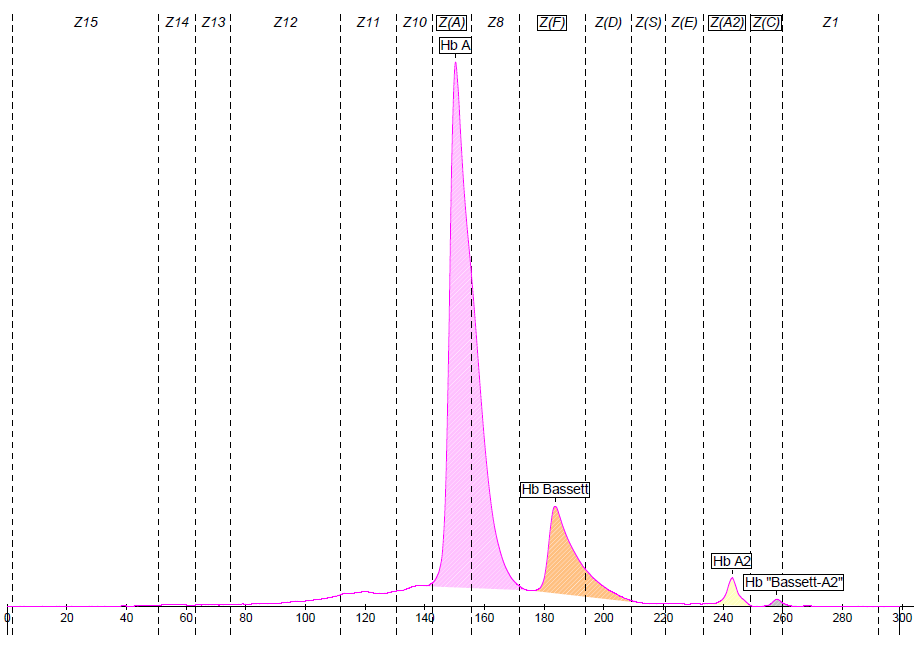General information
Globin chain involved
Status
Heterozygous
Migration zones
Migration positions
181-185, 256
Sickle Cell Disease: No
Thalassemic variant: No
Capillary Electrophoresis
Fractions
Value %
Hb A
82.0
Hb Bassett
15.4
Hb A2
2.1
Hb "Bassett-A2"
0.5
Comments
Due to the very low oxygen affinity of this rare variant , the main peak of Hb Bassett can be positioned between 181 and 185 points.
Mutation data
Heterozygous Hb Bassett
Mutation
HGVS Nomenclature
Alpha1 94(G1) Asp>Ala
HBA1:c.284A>C
Hematological parameters
Name
Result
RBC Count
No information
Total Hemoglobin
Low
MCV
No information
MCH
No information
Blood smear
No information
Other analysis
No information
Comments on hematology
Mild chronic anemia, chronic cyanosis
Clinical context
Clinical presentation
Cyanosis symptoms
Clinical risk
Probable aggravation of anemia and cyanosis in combination with Alpha zero thalassemia
Variant information
Stability
Slightly unstable
Oxygen affinity
Greatly decreased
Ethnicities in literature
Found in Causasian populations: met in a young Anglo-Saxon female living in New York State, USA and a young male from the USA
Comments on variant information
Scientific Literature
Scientific references
- https://pubmed.ncbi.nlm.nih.gov/15495251/ Abdulmalik O. et al., Am J Hematol. 2004 Nov;77(3):268-76.
- https://pubmed.ncbi.nlm.nih.gov/15681866/ Safo MK. et al., Acta Crystallogr D Biol Crystallogr. 2005 Feb;61(Pt 2):156-62.
- https://pubmed.ncbi.nlm.nih.gov/29365076/ Riou J. et al., Am J Clin Pathol. 2018 Jan 29;149(2):172-180.
Globin Chain involved
Status
The term "Double Heterozygous" refers to cases of heterozygosity on different globin chain types, while the term "Compound Heterozygous" refers to cases of heterozygosity on the same globin chain type.
For example, S/G-Pest is a Double Heterozygous case (beta and alpha-globin chains are mutated) and S/C is a Compound Heterozygous case (only beta-globin chains are mutated).
Migration zones
Migration positions
Sickle Cell Disease
Thalassemic variant
Capillary Electrophoresis
Variant information
Ethnicities are provided for informational purposes only and are based on scientific literature and conference posters.
A hemoglobin variant may therefore be present in populations of ethnic origins or countries not listed here.

